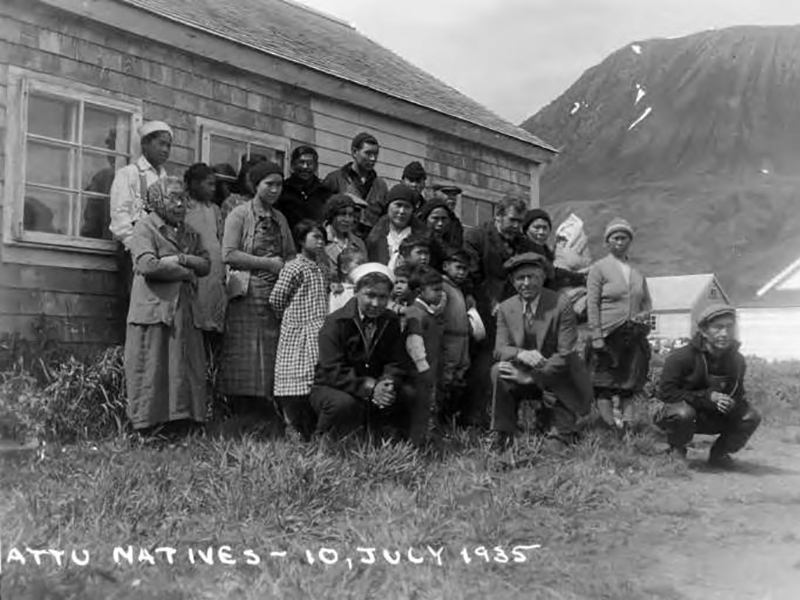Exploring Attu’s Underwater Battlefield and Offshore Environment
Pre-War Attu (Atux̂)
The maritime history of Atux̂ (indigenous endonym for Attu) is not limited to World War II, as 3,000 years before the battle, ancestral Sasignan, likely from the Rat Islands to the east, came to the island via boats. They brought with them a several thousand year history of maritime focus and knowledge of seascapes that shaped individual and community identities for all Unangax̂ (indigenous endonym for Aleut) past and present in the Aleutian Islands.
Ancestral Unangax̂ usage of the intertidal zone, near shore, bays, and deeper ocean waters throughout the archipelago included seasonal use, exploration, and subsistence travel by boat. The terrestrial archaeological record of the Unangam past includes incredibly well-preserved coastal village midden sites. Like other ancestral Unangax̂ throughout the archipelago, Sasignan ancestors left behind these records of resource exploitation among the detritus of their culturally complex lives. The midden sites demonstrate an extensive maritime history and allow for hypotheses regarding modifications that Unangax̂ made to enhance their use of these spaces. Sasignan interactions with and impacts on the seabed were likely stable throughout much of their history. The resource areas most heavily exploited by Sasignan included the reefs, beaches, and inshore waters near villages. The waters provided much of the food and materials needed to thrive for millennia. Sasignan regularly traveled further from villages by boat, including iqyax̂ (kayaks) or nigilax̂ (open boats), for bird and sea mammal hunting, fishing, seasonal travel, and transportation of families or larger groups of people between islands.

For Atux̂, significant shifts in Sasignan lifeways occurred during the Russian era (CE 1745-1867), as the arrival of the Russians devastated the Sasignan villages, with many people dying or being removed to hunt for the Russians elsewhere. Sasignan life in the Near Islands was severely disrupted during the Russian exploration and trapping era (CE 1745-1867). More than 80 Russian fur hunting crews worked on Atux̂ alone, as the Sasignan population fluctuated over the next century. After the U.S. purchased Alaska from Russia in 1867, Atux̂ continued to be inhabited by its native residents, though occupation became consolidated into a single historic village near Chichagof Harbor. Around the turn of the century, the U.S. Navy conducted several trips to the island, while the waters around the island served as a fertile sealing ground. The Sasignan occupation of Atux̂ ended in September 1942, when the Japanese military transported the entire population to a prisoner of war camp in Otaru, Japan. Submerged evidence of Russian mercantile activities may be present, as at least one shitik (a lash plank cargo vessel) sank near Atux̂ in 1750. Eighteenth-century Russian sailors noted two additional foreign shipwrecks around Atux̂, while later, two unidentified 19th century Japanese junks (sailing fishing vessels) were also reported as wrecked. Information, including location, circumstance, and dates, regarding these pre-WWII wrecks and others in the Aleutians is exceedingly scarce, and thus, the true total of shipwreck sites around Atux̂ is likely much higher than what is reported. Even today, disappearances of fisherman and others sailing the Bering Sea can remain unsolved.
By Caroline Funk, Ph.D. and Bobbi Hornbeck, Ph.D.
Published October 14, 2024